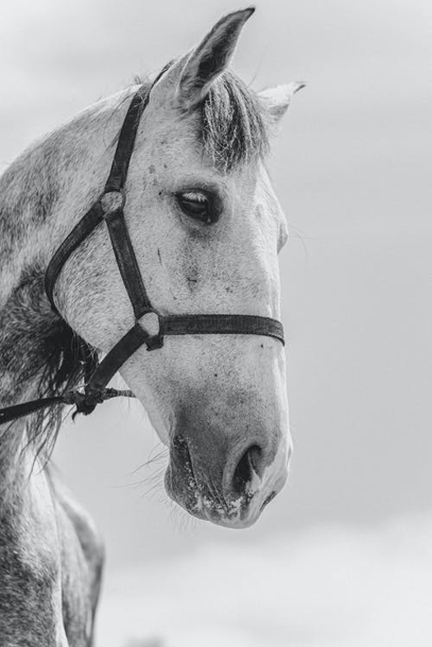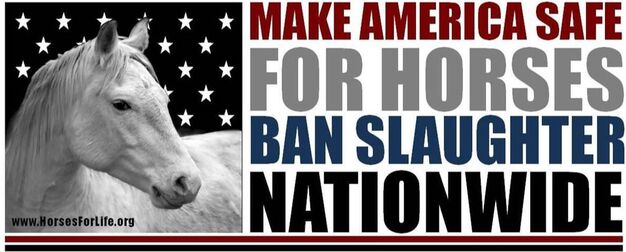The legal issue of horse slaughter for human consumption has been debated in U.S. courts and Congress for years. It especially heated up in 2012—2013 when the federal appropriations bill was approved without a ban for USDA horsemeat inspections. What followed was the attempt to reopen horse slaughter facilities on U.S. soil. But this wasn't the first contentious period in the horse slaughter debate. The timeline below lists key legal battles and legislative dates at the state and federal levels.
U.S. HORSE SLAUGHTER TIMELINE
<
>
November 1998: California voters passed Proposition 6 which banned the slaughter of horses, donkeys and mules and sale of horse meat for human consumption. June 2005: Rep. John Sweeney (R-NY) proposes an amendment to the 2005-2006 appropriations bill prohibiting federal funding for inspections of horses for meat. The amendment passed on a vote of 269-158. September 2005: Sen. John Ensign (R-NV), a veterinarian, and nine co-sponsors proposed a companion amendment to the Sweeney amendment that had passed the House of Representatives. The Senate amendment passed 69-28. November 2005: The Agriculture, Rural Development, Food and Drug Administration, and Related Agencies Appropriations Act, 2005-2006 was signed into law. This appropriation bill included the following paragraph that ultimately led to the closure of horse slaughterhouses in the United States: H. R. 2744—45 SEC. 794. Effective 120 days after the date of enactment of this Act, none of the funds made available in this Act may be used to pay the salaries or expenses of personnel to inspect horses under section 3 of the Federal Meat inspection Act (21 U.S.C. 603) or under the guidelines issued under section 903 the Federal Agriculture Improvement and Reform Act of 1996 (7 U.S.C. 1901 note; Public Law 104–127). February 2006: The USDA issued a regulation (CFR 352.19) that allowed the remaining slaughterhouses to circumvent the horse inspection funding ban by paying for their own inspections.
September 2006: The House of Representatives passes the American Horse Slaughter Prevention Act, which would ban the sale and transport of American horses for human consumption. The Senate bill died in committee. January 2007: The American Horse Slaughter Prevention Act (H.R. 503/S.311) was introduced by Janice Schakowsky (D-IL) in the U.S. House and in the U.S. Senate by Mary Landrieu (D-LA). The legislation was referred to the U.S. House Agriculture Committee but never moved to a full vote. January 2007: A three-judge panel from the U.S. Court of Appeals, Fifth Circuit upheld Chapter 149 of the Texas Agriculture Code banning the sale, transfer or possession of horse meat for human consumption. This decision was upheld by the 19 judges of the Fifth Circuit Court of Appeals. The statute had been in effect since 1949 but had not been enforced during the years that the Texas slaughterhouses were operational. This decision was upheld by the 19 judges of the Fifth Circuit Court of Appeals on March 6, 2007. March 2007: The Dallas Crown slaughterhouse of Kaufman, Texas shut down operations. The mayor and residents of Kaufman had fought a long and expensive battle in an effort to shutter the plant, which had a long list of environmental complaints and was considered a public nuisance. March 2007: U.S. District Court for the District of Columbia ruled that it was illegal for horse slaughterhouses to pay the USDA for their own horse meat inspections, closing the loophole that had allowed horse slaughter to continue around the federal law. USDA inspectors were pulled from Cavel International, the equine slaughterhouse in DeKalb, Illinois the following day, and operations were shut down. May 2007: Governor Rod R. Blagojevich signed legislation (H.B.1711) that bans the slaughter of horses in Illinois for human consumption. The state law bans importing or exporting horsemeat if any horsemeat will be used for human consumption. May 2010: Florida Governor Charlie Crist signed amendment HB 765 into law, making it a second-degree felony to kill, maim, or mutilate horses—and forbids the transport, distribution, sale, and purchase of horsemeat for human consumption. July 2011: U.S. Senators Mary Landrieu (D-LA) and Lindsey Graham (R-SC) reintroduced the American Horse Slaughter Protection Act (S. 1176). September 2011: The Senate Appropriations Committee approved a version of the agriculture appropriations bill that no longer contained the ban on funding for horse meat inspections. November 2011: The agriculture appropriations bill for 2012 was passed by Congress and signed into law without the wording that had prohibited horse meat inspections since 2006. September 2012: New Jersey enacted a law that bans horse slaughter within the state (A-2023). The law prohibits the in-state slaughter of horses, transportation of horses to slaughter and the sale of horse meat for human consumption. January 2013: The New York State Assembly introduced a bill (A.B. 3905) that would prohibit the slaughter of horses intended for human consumption and the export of horse meat. March 2013: Maine’s House of Representatives introduced L.D.1286 which aimed at protecting horses from slaughter by prohibiting the sale or the transport of horses for slaughter within the state. March 2013: The Safeguard American Food Exports Act was introduced in both the House and Senate. If passed into federal law, the Act would make it illegal to slaughter American horses on U.S. soil and abroad. March 2013: In New Mexico, a bill (H.B.90) introduced in the state house that would allocate money for the New Mexico Department of Agriculture to study the feasibility of locating a horse slaughter facility in the state. March 2013: Oklahoma lifted its 50-year ban on horse slaughter when Gov. Mary Fallin signed a new law that will allow slaughter facilities to process and export horsemeat. This new law went into effect November 1, 2013. June—September 2013: The USDA issues a “Grant of Inspection” to facilities in New Mexico, Iowa, and Missouri to allow them to slaughter horses. July 2013: In response to the U.S. Department of Agriculture's decision to allow horse slaughter facilities to resume operating on U.S. soil, a federal lawsuit was filed against the agency by HSUS, Front Range Equine Rescue, Horses For Life Foundation, Marin Humane Society, et al. January 2014: A new federal budget with the horse slaughter prohibition language included was passed by Congress and signed by President Obama. 2014 — 2020: The federal bill, the Safeguard American Food Exports (SAFE) Act, which would make it illegal to slaughter equines on U.S. soil or abroad, has been introduced in every Congressional session. Despite broad bipartisan support, the measure has yet to be passed into law. May 2021: The Save America's Forgotten Equines (SAFE) Act was introduced in the U.S. House. If passed into federal law, slaughtering American equines on U.S. soil or abroad would be illegal. June 2021: U.S. Representatives Troy Carter (D-LA), Brian Fitzpatrick (R-PA), and John Katko (R-NY) introduced an amendment to the federal transportation bill, the INVEST Act, to prohibit the transport of slaughter-bound equines over state lines and over American borders. It passed unanimously in the U.S. House by a voice vote but did not advance through the U.S. Senate. December 2021: New York State Governor, Kathy Hochul, signed S.1442B/A.4154B into law which prohibits racehorses and breeding stock from New York to be commercially slaughtered for human consumption. June 2022: The Save America's Forgotten Equines (SAFE) Act, H.R.3355, was advanced by the E&C Consumer Protection and Commerce Subcommittee by a voice vote, but was blocked from reaching the full Committee. January 2023: Wyoming state legislators introduced a bill (HJ0003) to slaughter wild horses in the state and commercially sell the horsemeat for profit. Even if the bill should be signed into state law, it has no teeth. Federal law, through the defunding of USDA horse slaughter inspections, effectively bans the slaughter of horses on U.S. soil. January 2023: Colorado state legislators Sen. Sonya Jaquez Lewis (D-Eastern Boulder County) and Rep. Lorena Garcia (D-Commerce City) introduced a bill (SB23-038) to make it illegal import, possess, or transport slaughter-bound equines within the state of Colorado or over state lines. The bill was gutted through an amendment and did not advance. May 2023: U.S. Reps. Vern Buchanan and Jan Schakowsky reintroduced the Save America’s Forgotten Equines (SAFE) Act which would to permanently ban the slaughter of horses for human consumption on U.S. soil and prohibit the export of live horses to Mexico and Canada. The bill will amend the Agriculture Improvement Act of 2018 (the Farm Bill) by adding equines to the Dog and Cat Meat Prohibition Act. |
|




